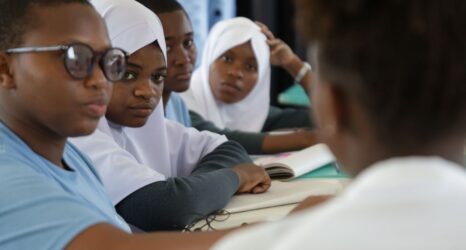Last month, women’s rights advocates and development practitioners rallied together to make noise against and call for the eradication of Female Genital Mutilation/Cutting (FGM/C). The International Day of Zero Tolerance to FGM/C shed light on a practice that is devastating to millions of girls and women all around the world.
FGM/C involves “the partial or total removal of the female external genitalia or other injury to the female genital organs for cultural or other non-therapeutic reasons” and affects more than three million girls and women each year. The U.N. estimates that there are over 200 million girls and women alive today who have had some form of mutilation or cutting–just 10 million less than the entire population of Brazil.
Despite numerous international conventions and protocols protecting the rights of women and girls to live free from bodily harm—such as the Maputo Protocol and the Convention on the Elimination of all Forms of Discrimination Against Women—and a global decline in number of new cases, there is still no global consensus around what some have called a global pandemic.
Why is that?
Unfortunately, not everyone sees FGM/C as a human rights issue. In many countries, and despite some national-level legislation against the practice, FGM/C goes unchallenged and unpunished. The medicalization of the procedure has been very detrimental to the fight to eradicate it: some challenge the fact that it is not “harmful” if done by medical staff. In Indonesia, more than half of girls underwent the procedure by a trained medical professional. In a move that shocked women’s rights advocates worldwide, a group of US doctors published a report in 2016 proposing nicking genitals as a “compromise” for FGM/C in western countries. This is representative of what advocates are facing: the idea that women’s bodies can be subject to “compromise” to please value systems and beliefs that call for their physical alteration.
The dominant narratives around FGM/C have sometimes been detrimental to creating an impactful global strategy that addresses the practice in all its complexity. There has been a constant focus on certain geographical regions—mainly Africa—resulting in little funding and support for advocates working on FGM/C in other parts of the world. Sahiyo, a community-based organization working to end FGM/C through awareness campaigns and storytelling, told Ms. that donors acted incredulously when receiving their applications for funding to tackle FGM/C by India’s Dawoodi Bohras, because “they don’t know it’s happening in India, no one does.”
Beyond their work in India, Sahiyo attests that the lack of awareness, let alone data on, of the existence of FGM/C across Asia, innately challenges its eradication. While recent years have put forward the prevalence of the practice in countries like the U.S. and state legislation has popped up against the practice (the Population and Reference Bureau estimates that some 500,000 girls are at risk of FGM/C in the United States), there is still a need to incorporate advocacy efforts in schools, communities and our society at large.
FGM/C has been mostly addressed independently of other harmful practices. In other words, FGM/C has gained a slightly different status than other harmful practices—so much so that Target 3 of the Sustainable Development Goal 5 mentions it specifically. And while it is true that its numbers are higher than most other harmful practices, it remains part of a continuum of harmful practices that need to be addressed in a holistic way.
So where do we go from here?
We continue the good work against FGM/C, but expand our campaigns to be global in scope and our efforts to include other forms of bodily harm. We must also invest time and resources to better understanding the continuum of violence and bodily harm that originates in patriarchal systems of control over women’s bodies, sexualities and individual freedoms. Until we address these patriarchal systems—and not just their byproducts—we won’t find a sustainable solution. Our Alliance members from Cameroon are constantly asking us to amplify the need to address practices such as “Breast Ironing.” Members in Ghana have long denounced the practice of “Trokosi,” which results in sexual servitude and in most cases, bodily harm and sexual abuse. We won’t eliminate one of these practices before the others: they will all end once we manage to dismantle patriarchal norms, institutions and traditions.
The fight against FGM/C is far from over. But the good news is, we can learn from the successes—and the shortcomings—of our past advocacy efforts. Hopefully, we can move towards a model that looks at ending FGM/C everywhere, for everyone—and in a way that dismantles the very patriarchal systems that allow it to thrive.





